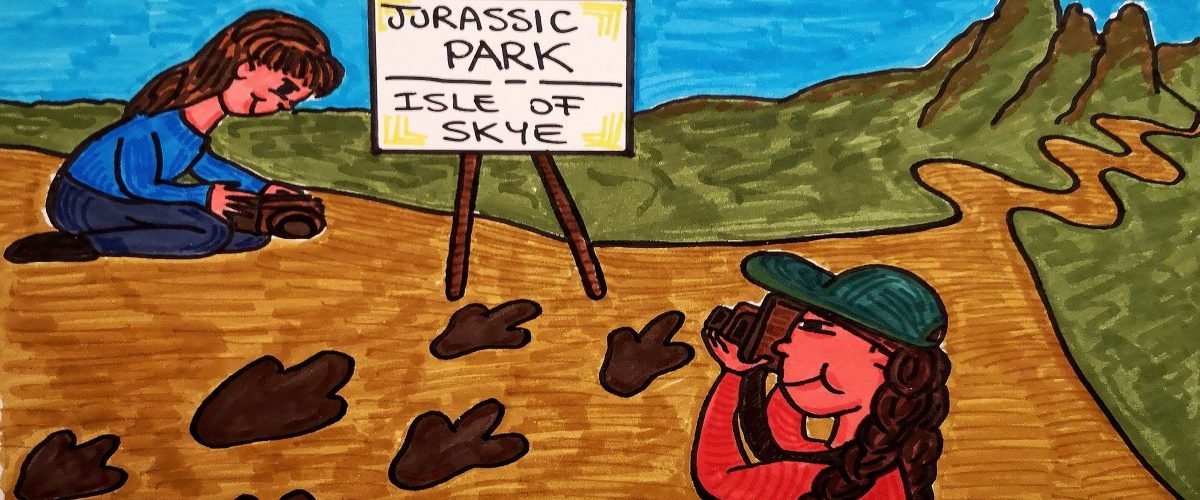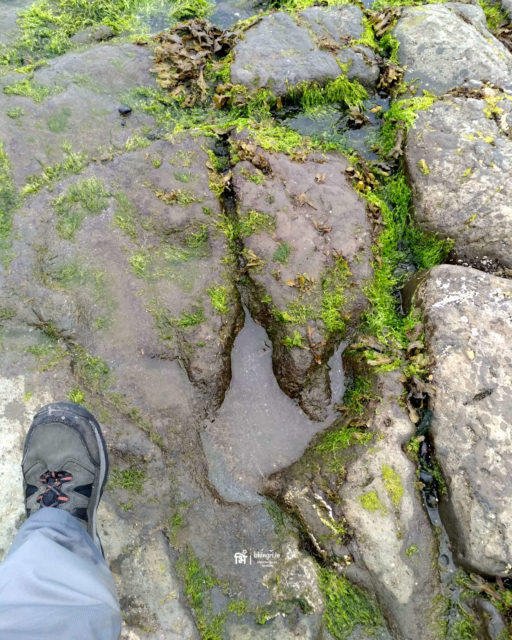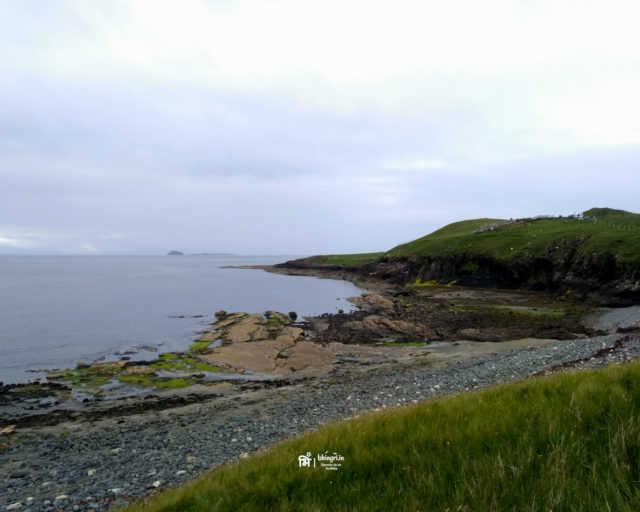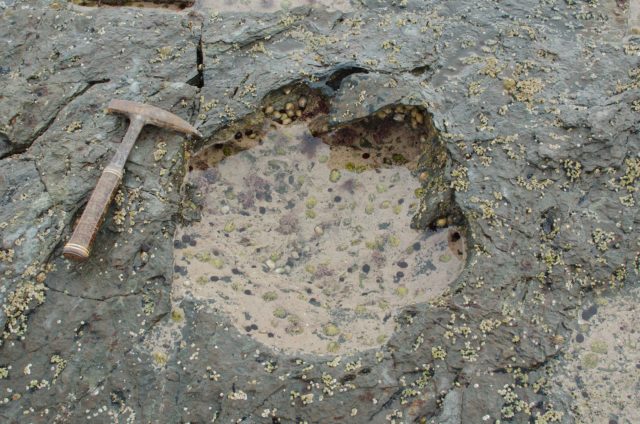Scotland’s best kept secret: Jurassic Period treasure on the Isle of Skye

Deep Bandivadekar explores the interesting world of dinosaurs and their connection with an island in Scotland.
Undoubtedly, the Isle of Skye is one of the most famous tourist destinations in Scotland. However, many visitors and even residents of mainland Scotland are unaware of a very interesting aspect of the island: the Isle of Skye is home to an incredible number of Jurassic Period fossils and dinosaur footprints. While the dinosaur footprints near the tiny fishing town of Staffin are relatively well known, there are other places where one can spot these interesting specimens from millions of years ago. Over the last few years, new sites have been discovered and researchers are working to unravel the mysteries behind the footprints.
What is fossilisation?
The Jurassic Period began approximately 200 million years ago and lasted for about 55 million years. To put this into perspective, if we assume the average human lifespan is 80 years, this was approximately two and a half million lifetimes ago. That makes dinosaurs an incredibly old species. So, the first obvious question that comes to mind is how does something so old get preserved for so long? The answer to this question lies in the way these fossils are formed. Generally, when animals and plants die, they start to rot and their remains disintegrate over a period of time. However, in some rare cases the decomposition process is altered in such a way that these remains are transformed into what we now know as fossils.
The soft tissues of dead animals and plants wither away over time and the hard tissues (e.g. bones) get buried under sediment due to natural processes like floods and volcanic eruptions. While layers of sediment build up over the years, the chemical composition of the remains changes gradually under soil pressure and exposure to various minerals through seepage water. Sometimes, the remains are dissolved completely, allowing these minerals to replace the original bones, creating a cast. This transforms into a replica of the original remains which we now, after millions of years, call a fossil.
Fossils and footprints on the Isle of Skye
Fossils and footprints can be found all over the Isle of Skye, especially on the Trotternish peninsula, but many of them can be seen in the Staffin Dinosaur Museum near Ellishadder. For palaeontologists around the world, the Staffin Museum is the first point of interest when it comes to fossils on this island. For local residents, accidentally finding some fossils while taking a casual stroll on the beach is not uncommon. In fact, some fancy being fossil collectors as well. However, the general public is not trained to take care of the fossils or preserve them scientifically. This increases the risk of losing valuable knowledge resources to carelessness. As a result, a Nature Conservation Order (NCO) was recently passed by the Scottish government to protect these sites 1.

In the Jurassic Period, the Trotternish peninsula on Skye was a huge estuary where many peculiar animals, now extinct, searched for food in the mudflats. Some of these animals were early forms of dinosaurs which is evident from the footprints they left behind. The footprints show evidence of large carnosaur-like animals, smaller theropods, and ornithopods of different types 2. Some of the most prominent tridactyl (three toed) footprints are seen on the An Corran beach near Staffin and they are believed to be of early form of Ornithopods, a type of bipedal herbivore3. The fossils were discovered by locals in 2002 after a storm uncovered a series of them on the sedimentary slabs of the beach. Research by palaeontologists from the University of Glasgow suggested that these tridactyl species were similar to the Megalosaurus family of dinosaurs 4.
However, Staffin is not the only location where such footprints have been found on the Trotternish peninsula. Researchers have previously published discrete findings at Duntulm, Score Bay, Valtos and other coastal points on the island. Recently, in 2015, and again in 2018, a team of researchers from the University of Edinburgh discovered new footprints at a place called Rubha nam Brathairean (Brothers’ Point) 5.

Why are dinosaur tracks on Skye in the news?
The Jurassic Period comprises Late (163-145 million years ago), Middle (173-163 million years ago) and Early (200-173 million years ago) sub-periods. The tracks found at various locations on the Isle of Skye are from the Middle Jurassic sub-period. According to researchers, fossils from this sub-period are quite rare. The discoveries from the Trotternish peninsula in the last couple of decades have shown the potential to fill in this knowledge gap. As a result, these locations are attracting a lot of curiosity among palaeontologists, particularly those interested in the Middle Jurassic Period. The latest discoveries at Brothers’ Point have given some more insights into how these once-powerful animals lived and interacted with other species. For instance, it was previously believed that sauropods (from the family of herbivorous, long-necked quadrupeds) were land-based dinosaurs. This idea is now being challenged based on the consistent evidence found along Skye’s coastline. The recent discovery of footprints at Brothers ́ Point and the earlier studies suggest that these sauropods and theropods visited the brackish lagoon environment frequently. The footprints also speak volumes about what behavioural interactions these dinosaurs would exhibit. For instance, the presence of curved claws suggests that these dinosaurs were predators.

CC-BY-SA-2.0 [no changes to original image]
A very recent study of fossilised teeth found near Valtos, on the Isle of Skye, has thrown more light on the predatory theropod dinosaurs from the Middle Jurassic Period 6. Many of these footprints and other fossils are in the tidal area so researchers face difficulties in documenting them. They have to rely on some innovative methods to scale and photograph these footprints before they can study them. These recent studies give some clues about how these dinosaur species fitted in the food chain 160 million years ago. However, as with any new discovery, along with providing some answers, there are always new questions. Researchers are now exploring the links of these species with the ones from the Late Jurassic Period and are investigating why certain species continued in the food chain while others perished along the way. In the coming years, we could know more about these incredible species from a very specific period of evolution. In the meantime, we can certainly go to the Isle of Skye and explore its coastline for a unique dinosaur experience!
This article was specialist edited by Alexandra Mittens and copy-edited by Gemma Donnelly.
References
- https://www.bbc.co.uk/news/uk-scotland-highlands-islands-49162745
- http://eprints.gla.ac.uk/30348/
- https://sjg.lyellcollection.org/content/40/1/13.short
- https://www.researchgate.net/profile/Neil_Clark4/publication/281438669_Dinosaurs_shifting_sands/links/55e6eabe08ae3ad5dab30bf4/Dinosaurs-shifting-sands.pdf
- https://sjg.lyellcollection.org/content/52/1/1, https://pubs.geoscienceworld.org/sepm/sjg/article/54/1/1/530025
- https://sjg.lyellcollection.org/content/55/1/7.abstract










